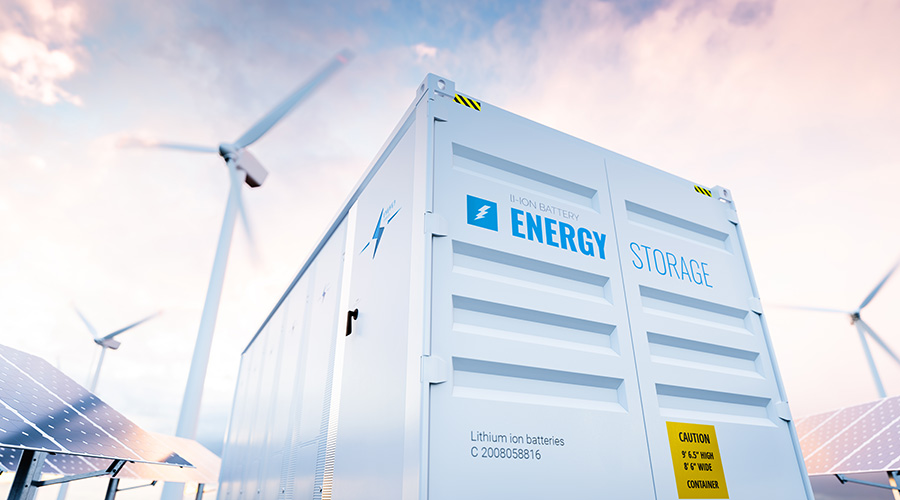Climate Change And The Economy: Why Warnings of Economic Doom Are Overblown
We have reached a critical juncture in the effort to address climate change. Unequivocal scientific evidence shows the Earth is warming, and dangerous climate impacts already are being felt across the United States and the globe. Immediate action is required to reduce carbon dioxide and other greenhouse gas emissions.
While there is no single solution to slowing climate change, the buildings sector — responsible for nearly 40 percent of U.S. carbon dioxide emissions and energy consumption — must play a critical role. Often called the “low-hanging fruit,” energy efficiency can have an immediate impact on cutting global warming pollution while lowering electricity costs. The buildings sector is well-positioned to capitalize on the dual benefits of energy efficiency. With the right mix of policies and technological advances, it can make a critical contribution to climate change mitigation through energy efficiency measures while simultaneously reducing operating costs.
What’s more, energy-efficient “green” buildings are expected to play a major role in the country’s economic recovery. Green building investments have the potential to create thousands of new jobs in new construction and retrofit of existing buildings over the coming years. Such jobs are likely to include environmental engineers and energy efficiency experts as well as construction workers and accountants.
President Barack Obama and many Congressional leaders recognize the link between environmental protection and economic prosperity. Already the President has taken significant action on the issue, first in directing more than $60 billion in spending and tax incentives to clean energy and energy efficiency in the federal stimulus package, and then by calling on Congress to pass legislation establishing a cap and trade system for greenhouse gas emissions. Transitioning to a low-carbon economy is now recognized as an economic and environmental imperative. Significant steps have been taken so far, but more action will be needed soon to fully realize this goal.
Scientific Basis
The Nobel Prize-winning Intergovernmental Panel on Climate Change (IPCC) has said that the warming of the planet’s system is “unequivocal.” This group of thousands of scientists from throughout the world represents the most comprehensive source of scientific information on climate change. In its latest report, published in 2007, the IPCC projected that global average temperatures will increase between 2 and 11.5 degrees F by 2100. Sea levels will rise by up to two feet or more. Many species will be lost. And there is at least a 90 percent chance that the world will see more temperature extremes, heat waves, droughts, heavy precipitation events, and an increase in the intensity of tropical cyclones.
The most staggering part, however, is that in less than two years since the IPCC issued that report, it has become increasingly clear that the impacts of climate change are happening much sooner than scientists had projected. Last September, for instance, a team of American glaciologists estimated that the sea level would rise by roughly three to six feet by 2100. The collapse in April of an ice bridge that connected the Jamaica-sized Wilkins Ice Shelf to the Antarctic Peninsula underscores such concerns. And in the Arctic, the past two years have seen summer sea ice reach its two lowest points ever recorded.
Instead of gradual climate shifts, many of the changes are likely to happen in fits and starts that will give the world far less time to adapt. Three feet of sea level rise occurring over the span of a century may sound somewhat manageable, at least for a relatively rich country like the United States. But the bulk of this rise could occur in one or two rapid pulses and total six feet rather than three. The bottom line is that without comprehensive and immediate action on this issue, the world faces potentially disastrous consequences.
Debate Over Cost
Despite the clear dangers of unchecked climate change, there remains vocal opposition to taking aggressive action to reduce emissions. Opponents of climate action typically focus on costs and cost impacts. Throughout the Congressional debate, we will hear a great deal about overall costs to the economy, costs to households, and possible job losses that may come about if policy makers institute a mandatory cap on greenhouse gas emissions. Opponents will argue that climate policy carries with it a price too large to bear, particularly as the country and the world struggle through economic hardship.
But a careful look at many of the economic studies that generate those figures reveals that new climate policy would result in only minimal economic impacts. GDP growth estimates for 2030, for example, would lag behind business-as-usual growth by less than three months in an economy that is twice as large as today’s.
Not only are the economic impacts cited by opponents often inflated, their arguments leave out three critical economic issues. The first and most significant is the cost of inaction. Consideration of the costs to reduce greenhouse gas emissions must be balanced against the costs of unabated climate change. For example, in Dade County, Fla., the value of land at risk from a one- to two-foot rise in sea level has been estimated at $4.8 to $12.3 billion. And in Alaska, projected increases in flooding and erosion are expected to increase infrastructure spending 10 percent to 20 percent by 2030, costing an additional $4 to $6 billion.
There is also the cost of regulatory uncertainty, which adds to the environmental costs of delayed action. Without knowing the rules of the road, firms are hamstrung in terms of investment decisions. Most businesses understand that some form of carbon regulation is imminent; they therefore know that they cannot continue down a business-as-usual path. But until they know what the rules are and what is expected of them, many firms are delaying investments in new technologies and processes. This is especially true in the electric power industry, where firms face pressing decisions on long-term, capital intensive investments.
Lastly, many analysts have pointed to the potential for significant job growth that can be expected as we shift to a cleaner energy economy. New sectors and new jobs are expected to be created as demand grows for low-carbon technologies and services.
The potential job benefits of low-carbon investments have compelled nations across the world to invest in green stimulus packages. The opportunity to stimulate economic revitalization by taking concrete steps to promote sustainable, low-carbon growth are identified by British economist Nicholas Stern in a 2009 report outlining areas for effective green stimulus. The report finds energy efficiency measures, particularly for buildings, are most capable of producing near-term economic gains while lowering greenhouse gas emissions. Specific efficiency actions cited in the report include improved insulation for homes and offices and replacement of inefficient boilers, lights and appliances.
In the United States, the stimulus bill signed by President Obama is expected to give the green buildings industry a significant boost, providing billions of dollars for retrofits for federal buildings, low-income housing, and residential and commercial buildings. But while the stimulus will provide a short-term boost, by itself it is not enough to drive the long-term transition to a low-carbon economy. A declining cap on carbon emissions is also necessary to provide the price signal and long-term market demand for low-carbon goods and services. In addition, complementary measures such as building performance standards that help advance a low-carbon future are needed to overcome market barriers by incentivizing efficiency investments.
Legislative Landscape
The good news is that the prospects for an effective, economywide national climate policy look better today than ever before. And it seems highly likely that there will be national policy and legislation within the next two years.
What would this new policy look like? Comprehensive legislation introduced in the House of Representatives by Henry Waxman (D-CA.) and Edward Markey (D-MA.) would establish an economy-wide cap-and-trade system that sets a limit on greenhouse gas emissions and minimizes the costs of achieving this target. By creating a market and a price for emission reductions, cap and trade offers an environmentally effective and economically efficient response to climate change.
The legislation also includes new renewable energy requirements, electricity transmission enhancements, and performance standards and financial incentives to promote energy efficiency. Specific green buildings provisions in the bill (which was being debated when this article was written) include funding to retrofit existing commercial and residential buildings. For new buildings, the legislation would enhance efficiency through federal training and funding assistance to states that adopt advanced building efficiency codes. The U.S. EPA would also be directed to develop procedures for rating building energy efficiency.
This legislation reflects the critical connection between economic growth, clean energy, and climate protection. This legislation would start the country on a lower-emission, clean-energy pathway and provide a new foundation for strong, sustainable economic growth. This view is shared by many political leaders, as well as corporate executives across diverse sectors and regions of the country. In fact, it’s the business community’s vocal demands for action that will help solidify support for a comprehensive national climate and energy policy.
Such support especially is noticeable in the advocacy efforts of the U.S. Climate Action Partnership (USCAP), a coalition of businesses and nongovernmental organizations calling on Congress to pass comprehensive climate legislation this year. USCAP includes 25 major companies in industries ranging from automobiles and oil to coal mining and coal-burning utilities, together with five major nongovernmental organizations.
In issuing legislative recommendations to Congress this year, the companies in USCAP cited the need for regulatory certainty as a major factor in their support for climate change legislation. Addressing the need for regulatory certainty to drive clean energy and efficiency advances, combined with the scientific urgency of climate change, demands a comprehensive federal response. Yet individual states and regions are moving forward with their own climate change programs, and the EPA is starting to address the issue as required by a Supreme Court ruling. Companies would rather see a clear and consistent federal policy as opposed to varied and inconsistent regulations that complicate the business planning process.
Increasingly, business leaders and lawmakers believe the science, recognize the risks from climate impacts, and are demonstrating a firm commitment to take significant action. Done right, protecting the climate will create new jobs in industries that successfully position themselves as centers of innovation and technology development for a low-carbon world. For the buildings sector, energy efficiency improvements can deliver significant near-term reductions in greenhouse gases while creating new “green” jobs. Furthermore, combining technology advances with clear and sustained climate and energy policies will drive more dramatic emissions reductions over time.
Passage and implementation of a strong, sensible climate and energy policy will not be easy, but the bottom line is we must act. We don’t have another choice. Ultimate success depends on the extent that the connection is made between protecting the climate, increasing energy efficiency, expanding clean energy supplies and growing the U.S. economy.
Eileen Claussen is president of the Pew Center on Global Climate Change.
Related Topics:












